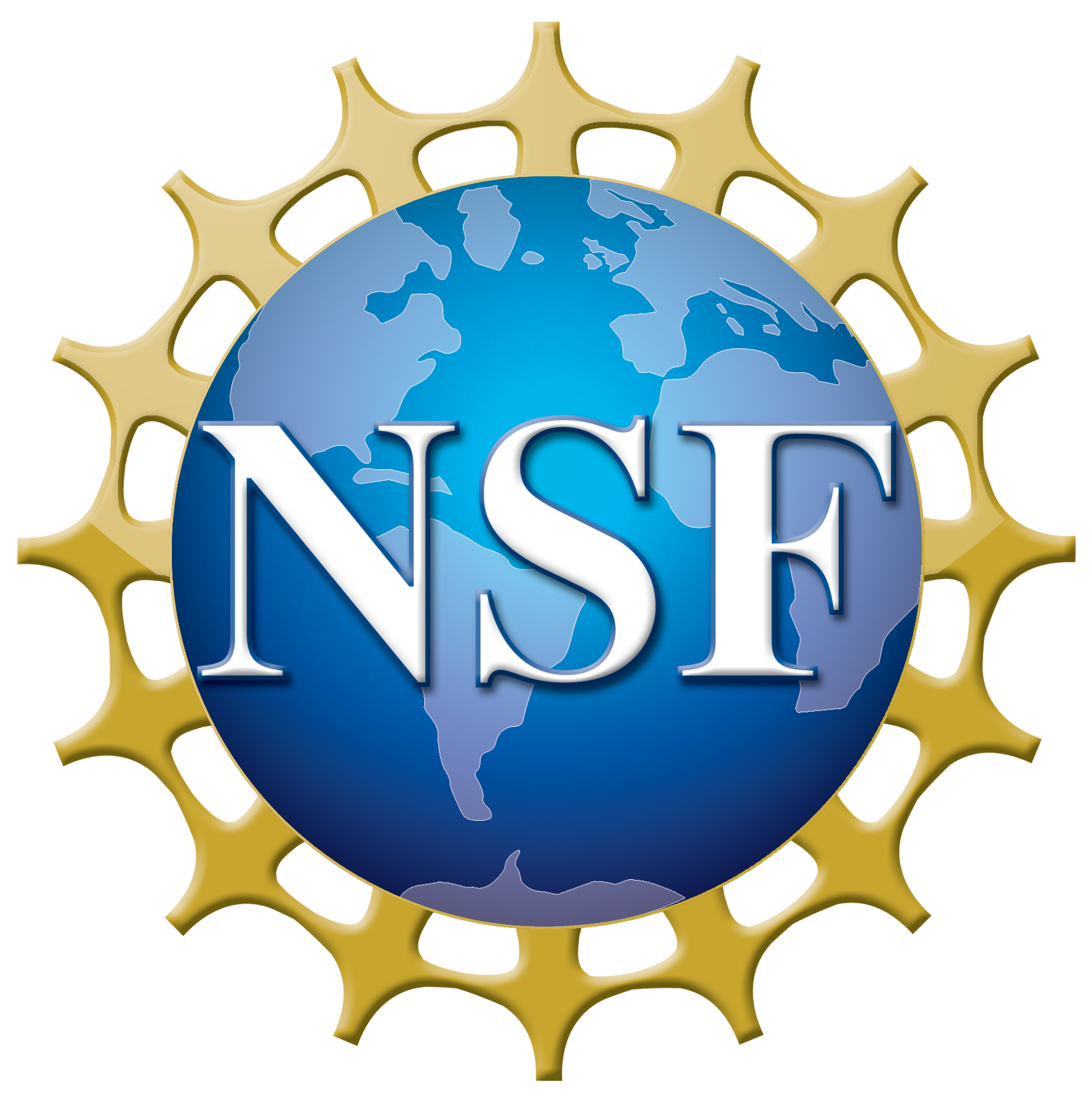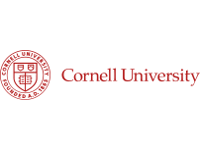PARADIM Highlight #110—In-House Research (2025)
Intrinsic behavior revealed by less-defective samples
K.M. Shen, D.G. Schlom, L.F. Kourkoutis, D.A. Muller (Cornell)
Nickelates are the subject of considerable interest because they are close cousins of the well-known "cuprates,” a family of copper oxide-based superconductors that can have high transition temperatures (Tc), upwards of 100 Kelvin, at which point electrical resistance vanishes.

Figure 1: Electrical transport measurements of NdNiO2 films grown on (001) SrTiO3 and (001) (LaAlO3)0.3(Sr2AlTaO6)0.7 (LSAT). (a) Resistivity of a series of films displaying partial superconducting transitions. (b) Resistivity of a series of films without signs of superconductivity. (c) Enlarged transition region for traces in (a). The dashed line represents the resistivity corresponding to the quantum sheet resistance per NiO2 plane, ρQ. (d) Superconducting transition of an NdNiO2 film on LSAT under an applied magnetic field parallel to the c axis, in 1 T steps. The residual resistivity ρres is extracted by extrapolating the normal state resistance to 0 K (dashed line). (e) Extracted temperature Tc onset, defined by a 2% drop below the normal state resistance, plotted versus the film residual resistivity extrapolated to 0 K using high field data for superconducting samples.
Here, members of PARADIM’s In-House Research Team report the observation of superconductivity with Tc onsets up to 11 K in undoped NdNiO2 thin films with high crystallinity and low residual resistivities. The superconductivity appears to emerge when the residual resistivity falls below the quantum of resistance per NiO2 sheet. We propose that superconductivity could be intrinsic to the clean limit of undoped NdNiO2, as it already possesses key ingredients necessary for cuprate superconductivity, including holes in the NiO2 plane (self-doped from rare-earth 5d orbitals) and short-ranged magnetic fluctuations. On the other hand, we cannot entirely rule out the possibility that residual apical oxygens could provide doped mobile holes to the NiO2 plane, which would present a new pathway to superconductivity in the infinite-layer nickelates.
Our results showing superconductivity in undoped NdNiO2 are accompanied by reports from other groups of superconductivity in undoped LaNiO2 and PrNiO2, suggesting that as film quality improves the intrinsic properties of these fascinating nickelates are beginning to emerge.
We report evidence for superconductivity with onset temperatures up to 11 K in thin films of the infinite layer nickelate parent compound NdNiO2. A combination of oxide molecular-beam epitaxy and atomic hydrogen reduction yields samples with high crystallinity and low residual resistivities, a substantial fraction of which exhibit superconducting transitions. We survey a large series of samples with a variety of techniques, including electrical transport, scanning transmission electron microscopy, x-ray absorption spectroscopy, and resonant inelastic x-ray scattering, to investigate the possible origins of superconductivity. We propose that superconductivity could be intrinsic to the undoped infinite-layer nickelates but suppressed by disorder due to a possibly sign-changing order parameter, a finding which would necessitate a reconsideration of the nickelate phase diagram. Another possible hypothesis is that the parent materials can be hole doped from randomly dispersed apical oxygen atoms, which would suggest an alternative pathway for achieving superconductivity.
Our work reveals the importance of cleaning up materials to reveal their intrinsic properties. Up to now the superconducting dome of the infinite layer nickelates has been asserted in both theory and experiment to resemble that of the cuprates, where chemical doping is required to achieve superconductivity. If correct, our hypothesis that even undoped rare-earth nickelates with the infinite layer structure superconduct will require a revision of the superconducting phase diagram; it is not simply a dome at at Sr contents in the 10-30% range. An unresolved question is the intrinsic behavior of superconductivity in the lightly doped regime (i.e., at Sr contents up to 10%) where superconductivity is believed to be absent (just like it was believed to be absent in undoped samples). Is there a continuous superconducting dome or superconductivity with no doping and then a separate dome of superconductivity at higher Sr doping? These are questions for future studies on less defective samples.
Key to the higher quality growth of undoped NdNiO2 films in this study is (1) the use of molecular-beam epitaxy with accurate flux calibration methods developed by PARADIM’s community of practitioners to grow the perovskite parent phase NdNiO3 and (2) the invention and development of the use of atomic hydrogen to reduce the NdNiO3 films grown by MBE to NdNiO2.
Parzyck, C. T. and Wu, Y. and Bhatt, L. and Kang, M. and Arthur, Z. and Pedersen, T. M. and Sutarto, R. and Fan, S. and Pelliciari, J. and Bisogni, V. and Herranz, G. and Georgescu, A. B. and Hawthorn, D. G. and Kourkoutis, L. F. and Muller, D. A. and Schlom, D. G. and Shen, K. M, "Superconductivity in the Parent Infinite-Layer Nickelate NdNiO2", Phys. Rev. X 15(2),021048 (2025)
The authors thank Y. Birkholzer, J. Fontcuberta, H.Y. Hwang, and D. Preziosi for enlightening discussions and sharing unpublished results, as well as S. Palmer and S. Button for their assistance in substrate preparation. This work was primarily supported by the Air Force Office of Scientific Research through Grant No. FA9550-21-1-0168 and No. FA9550-23-1-0161 and also by the U.S. Department of Energy (DOE), Office of Basic Energy Sciences, under Contract No. DE-SC0019414 and the National Science Foundation through Grant No. DMR-2104427 and the Platform for the Accelerated Realization, Analysis, and Discovery of Interface Materials (PARADIM) under Cooperative Agreement No. DMR-2039380. Additional support for materials synthesis was provided by the Gordon and Betty Moore Foundation’s EPiQS Initiative through Grant No. GBMF3850 and No. GBMF9073. G.H. acknowledges support from projects Severo Ochoa MaTrans42 (No. CEX2023-001263-S) and PID2023-152225NB-I00 of the Spanish Agencia Estatal de Investigación and by the Generalitat de Catalunya (2021 SGR 00445). A.B.G. was supported in part by Lilly Endowment, Inc., through its support for the Indiana University Pervasive Technology Institute. This research uses beam line 2-ID of the National Synchrotron Light Source II, a DOE Office of Science User Facility operated for the DOE Office of Science by Brookhaven National Laboratory under Contract No. DESC0012704. Part of the research described in this paper was performed using the REIXS and SGM beam lines at the Canadian Light Source, a national research facility of the University of Saskatchewan, which is supported by the Canada Foundation for Innovation (CFI), the Natural Sciences and Engineering Research Council (NSERC), the National Research Council (NRC), the Canadian Institutes of Health Research (CIHR), the Government of Saskatchewan, and the University of Saskatchewan. This work made use of the Cornell Center for Materials Research shared instrument facilities. The microscopy work was supported by NSF PARADIM (DMR-2039380), with additional support from Cornell University, the Weill Institute and the Kavli Institute at Cornell. L.B. and L.F.K. acknowledge support from the Packard foundation. The DFT calculations shown in this work have been performed on the Big Red 200 and Quartz supercomputer clusters at Indiana University. Substrate preparation was performed at the Cornell NanoScale Facility, a member of the National Nanotechnology Coordinated Infrastructure (NNCI), which is supported by the National Science Foundation (Grant No. NNCI-2025233).
Data acquired and analyzed during the course of the study are available at https://doi.org/10.34863/8x6a-m870.







